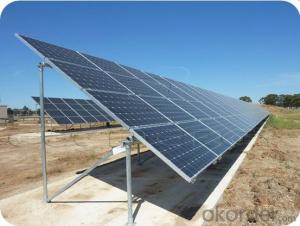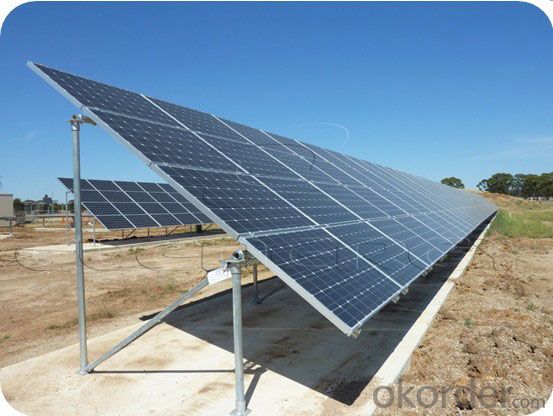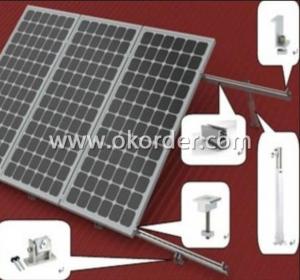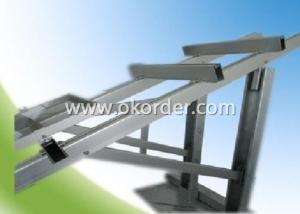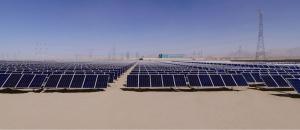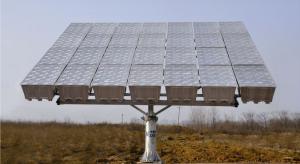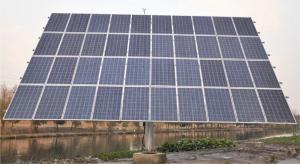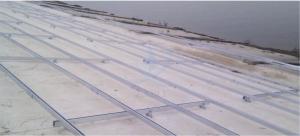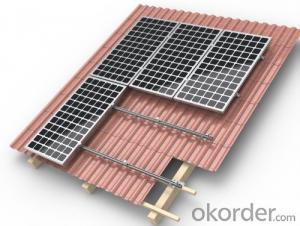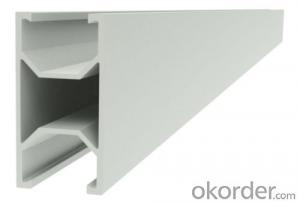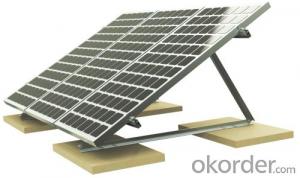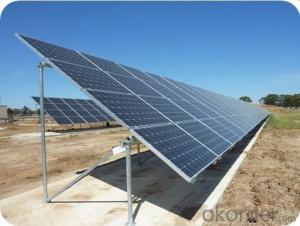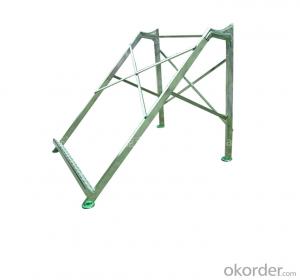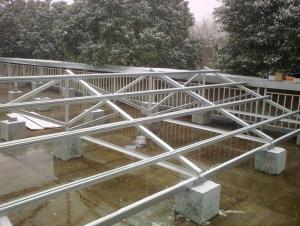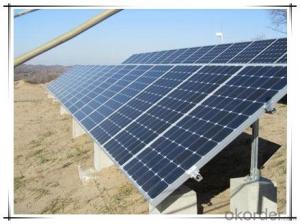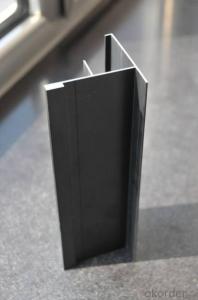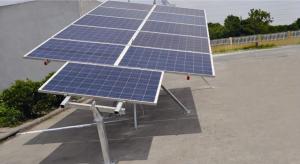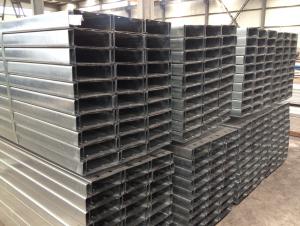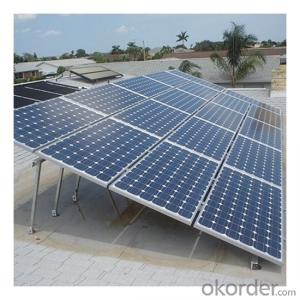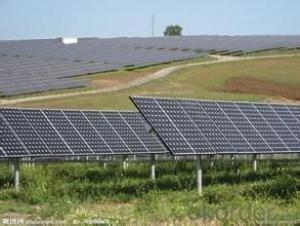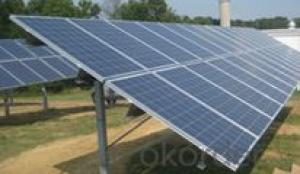Tesla Solar Mounting System Tri-Bracket 1#
- Loading Port:
- Shanghai
- Payment Terms:
- TT OR LC
- Min Order Qty:
- -
- Supply Capability:
- 50万套 set/month
OKorder Service Pledge
OKorder Financial Service
You Might Also Like
PV Mounting brackets are special solar photovoltaic systemfor placing, installing, fixing the solar panel design. Generally materials arealuminum, steel structure, stainless steel. PV mounting products at groundmounting system, flat roof mounting system, adjustable angle roof rack system,inclined roof rack system, column bracket system.
The Ground Mounting System including concret basement sysytemand steel pipe sysytem, Titanergy provides total solution for flat or pitchedroof with patent products.On the basis of the given project data, specificnational standards and guidelines, Titanergy will calculate the completestructural analysis and create a complete project plan to make sure reliablestructural safety.We provide high quality HDG steel and aluminum products forthe ground mounting sysytem,witch can make sure the security and durability ofthe project.
Features and Advantages
n The rail bracket is easy to install, just use simple tools(eg, Allen wrench) can be easily installed. Rail connecting member can freelyadjust the length, the stent may be pre-installed on the roof, and thenappropriately adjusted according to the size of the solar panel.
n The combination of strong, aluminum rails and card blocks fora variety of venues and a variety of materials roofs (such as metal, ceramicand other kinds of tile surface)
n Component compatibility, and rail can meet PV modules fromdifferent manufacturers.
n accuracy, the length of the rail to the nearest millimeter,the construction process, not because of the length is too long or too shortfor the second cut.
n flexible assembly, rail hooks can adjust the spacing modulearray and tile has been installed successfully address the uneven roofconstruction led to difficult problems.
n design standards, product design and development process instrict accordance with GB, the German standards and other internationalstandards to ensure products reach the world advanced level.
n Quality assurance, the stent main material is high-qualityaluminum and stainless steel, effectively prevent corrosion of oxidation.Products can be recycled, reducing environmental pollution.
n Carried out strictly according to the current specificnational standards
n Perfectly optimized components and complete structuralanalysis for the sysytem
n High corrosion resisitance ensure the stability and highdurability
n Total test and certification make sure the high quality ofthe products
n Maximum pre-assembled in factory,quick mounting onsite,timesaving
10-year durability warranty
Technical Data
n Design Period:25 years
n Installation Site: Open area
n Array Angle:10°~60°
n ModuleType:Framed or unframed
n Material:Q235B,Al 6063-T5,Al 6005-T5,StainlessSteel A2-70
n Coating:HDG/Anodised
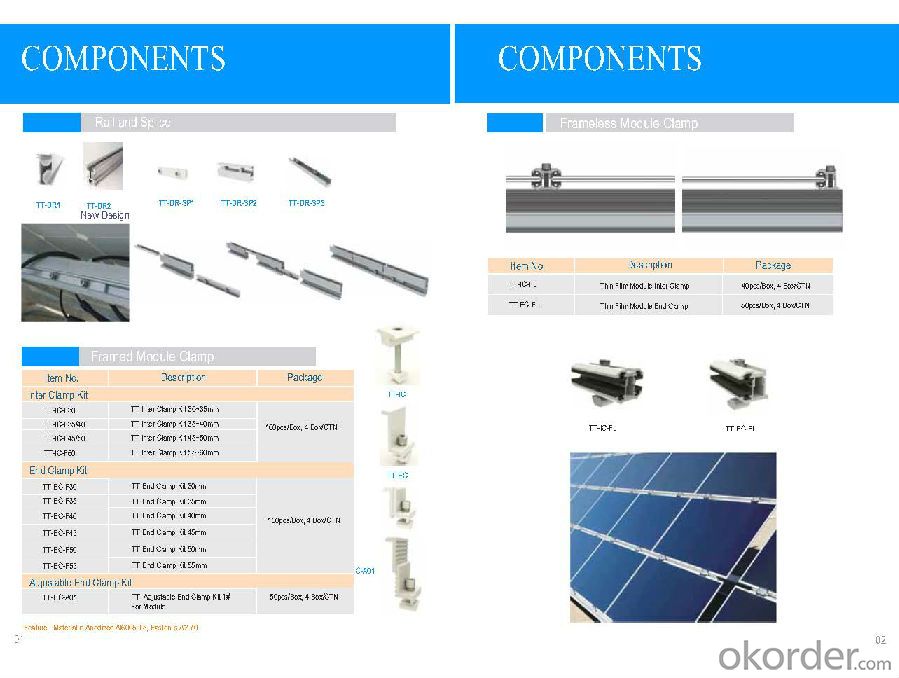
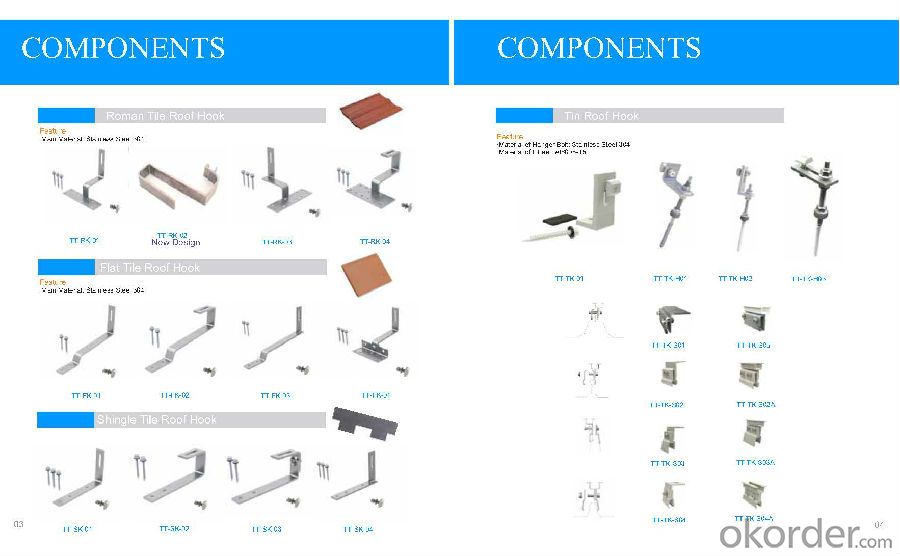
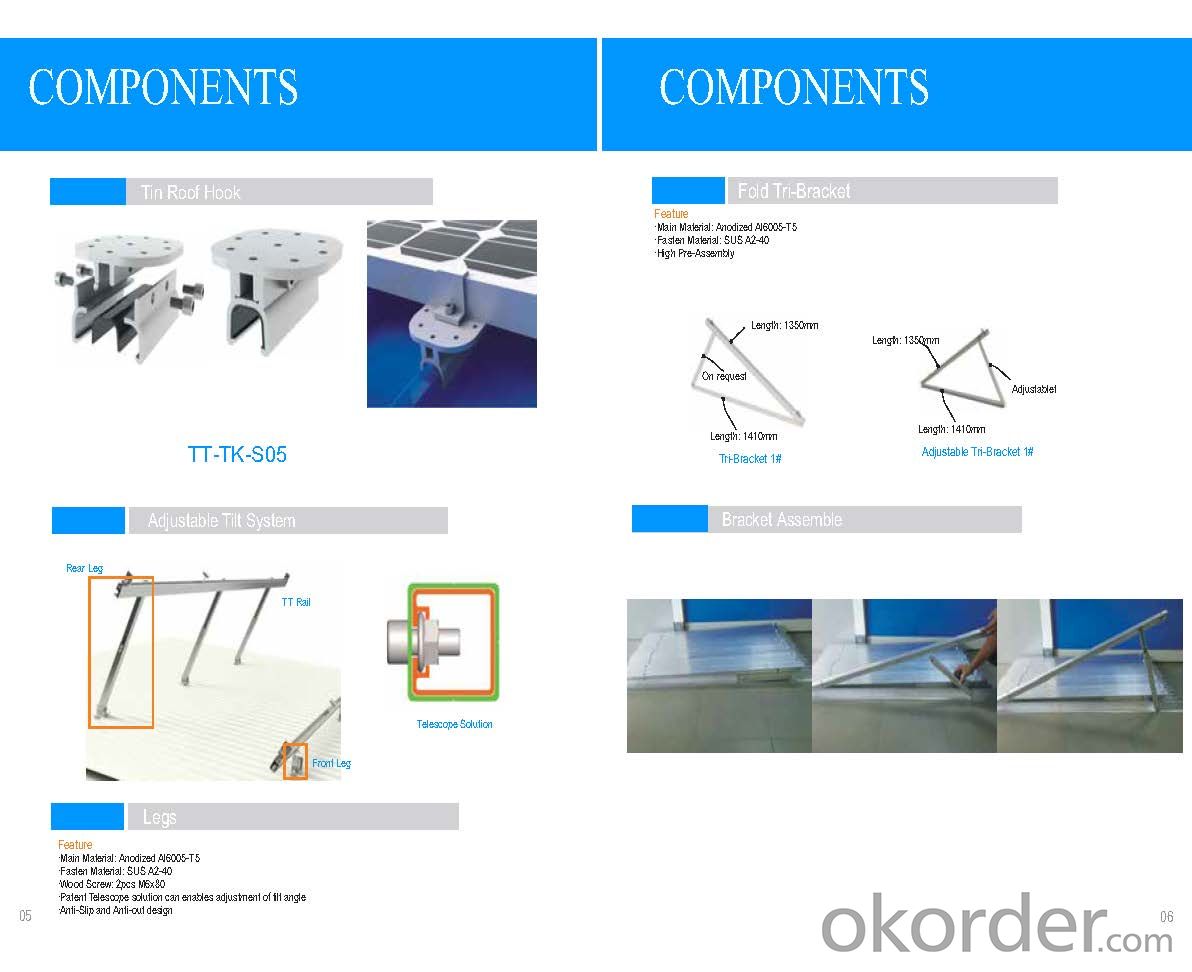
- Q: Can a solar mounting system be used in areas with limited access to quality control measures?
- Yes, a solar mounting system can be used in areas with limited access to quality control measures. However, it is important to ensure that the system is properly installed and maintained to minimize any potential risks or issues. Regular inspections and maintenance by qualified professionals are crucial to ensure the system's safety and performance.
- Q: Can a solar mounting system be used on carports?
- Yes, a solar mounting system can be used on carports. Carports provide a suitable structure for installing solar panels, allowing for the generation of clean and renewable energy while providing shade and protection for vehicles.
- Q: How does the cost of a solar mounting system compare to the cost of solar panels?
- The cost of a solar mounting system is typically lower compared to the cost of solar panels. While the cost of solar panels can vary depending on factors such as brand, quality, and efficiency, the cost of a solar mounting system is generally a smaller portion of the overall installation cost. This is because solar panels make up a significant portion of the total system cost, while the mounting system is typically a smaller component that helps secure and position the panels.
- Q: What is the cost of a solar mounting system?
- The cost of a solar mounting system can vary depending on various factors such as the size of the system, type of mounting system (roof-mounted or ground-mounted), location, brand, and additional features. On average, the cost can range from a few hundred dollars for small residential systems to several thousand dollars for larger commercial installations. It is best to get quotes from multiple suppliers or consult with a solar installer to get an accurate estimate for your specific requirements.
- Q: What is the maximum weight capacity of a solar mounting system?
- The maximum weight capacity of a solar mounting system can vary depending on the specific design, materials used, and manufacturer. However, typical solar mounting systems can support weights ranging from a few hundred pounds to several thousand pounds, depending on the size and configuration of the system. It is essential to consult the manufacturer's specifications and guidelines for accurate weight capacity information before installing solar panels.
- Q: Can a solar mounting system be installed on a rooftop with a synthetic roof?
- Yes, a solar mounting system can be installed on a rooftop with a synthetic roof. Synthetic roofs, such as those made from materials like rubber or plastic, can typically support the weight and installation requirements of a solar mounting system. However, it is important to consult with a professional installer to ensure that the specific type and condition of the synthetic roof is suitable for the installation.
- Q: Can a solar mounting system be used in hurricane-prone areas?
- Yes, a solar mounting system can be used in hurricane-prone areas. However, it is essential to ensure that the mounting system is designed and engineered to withstand high winds and severe weather conditions typically associated with hurricanes. Specialized hurricane-resistant mounting systems are available that can be installed to ensure the solar panels remain secure and stable during such events.
- Q: Can a solar mounting system be used with solar-powered off-grid systems?
- Yes, a solar mounting system can be used with solar-powered off-grid systems. The purpose of a solar mounting system is to securely hold the solar panels in place and optimize their angle towards the sun. This is equally important for off-grid systems as it is for grid-tied systems. The mounting system ensures that the solar panels receive maximum sunlight exposure, thereby maximizing the energy generation and efficiency of the off-grid system.
- Q: Can a solar mounting system be used for solar air conditioning or HVAC systems?
- Yes, a solar mounting system can be used for solar air conditioning or HVAC systems. The solar mounting system provides a sturdy and secure platform for mounting the solar panels that generate the electricity required to power the air conditioning or HVAC systems.
- Q: Are there any specific requirements for installing a solar mounting system on a flat concrete roof?
- Yes, there are specific requirements for installing a solar mounting system on a flat concrete roof. Firstly, the roof should be structurally capable of supporting the additional weight of the solar panels and mounting system. It is necessary to conduct a structural analysis to ensure the roof can withstand the added load. Additionally, the roof should have enough unobstructed space to accommodate the size and layout of the solar array. It is important to evaluate the orientation and shading of the roof to maximize solar exposure. Finally, the installation should comply with local building codes and regulations, including obtaining necessary permits and ensuring proper waterproofing and sealing to prevent any leakage or damage to the roof.
Send your message to us
Tesla Solar Mounting System Tri-Bracket 1#
- Loading Port:
- Shanghai
- Payment Terms:
- TT OR LC
- Min Order Qty:
- -
- Supply Capability:
- 50万套 set/month
OKorder Service Pledge
OKorder Financial Service
Similar products
Hot products
Hot Searches
Related keywords
